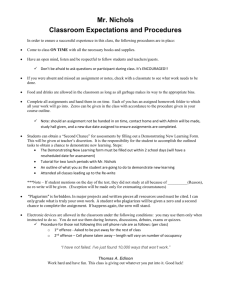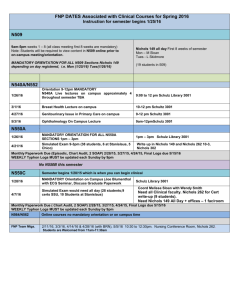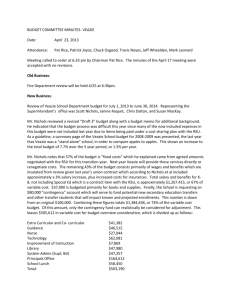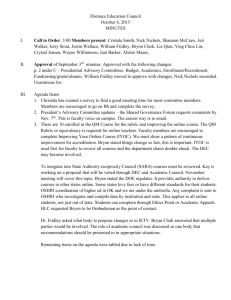Davidson Cattle Company Always Operated in Blow Sand Country
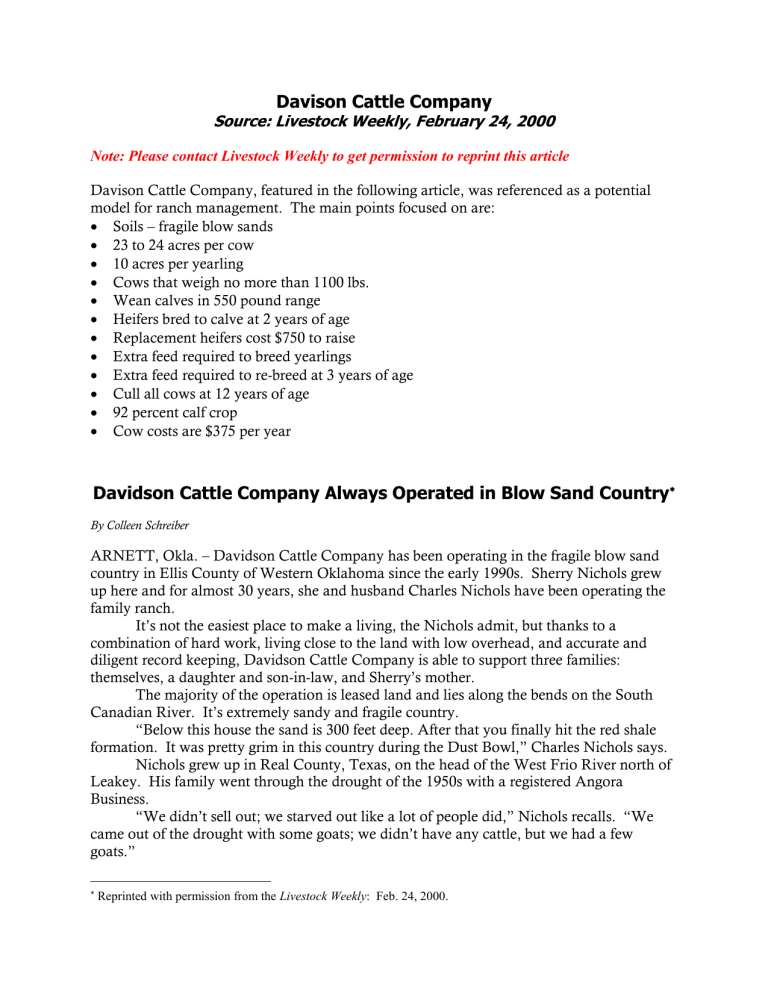
Davison Cattle Company
Source: Livestock Weekly, February 24, 2000
Note: Please contact Livestock Weekly to get permission to reprint this article
Davison Cattle Company, featured in the following article, was referenced as a potential model for ranch management. The main points focused on are:
Soils – fragile blow sands
23 to 24 acres per cow
10 acres per yearling
Cows that weigh no more than 1100 lbs.
Wean calves in 550 pound range
Heifers bred to calve at 2 years of age
Replacement heifers cost $750 to raise
Extra feed required to breed yearlings
Extra feed required to re-breed at 3 years of age
Cull all cows at 12 years of age
92 percent calf crop
Cow costs are $375 per year
Davidson Cattle Company Always Operated in Blow Sand Country
By Colleen Schreiber
ARNETT, Okla. – Davidson Cattle Company has been operating in the fragile blow sand country in Ellis County of Western Oklahoma since the early 1990s. Sherry Nichols grew up here and for almost 30 years, she and husband Charles Nichols have been operating the family ranch.
It’s not the easiest place to make a living, the Nichols admit, but thanks to a combination of hard work, living close to the land with low overhead, and accurate and diligent record keeping, Davidson Cattle Company is able to support three families: themselves, a daughter and son-in-law, and Sherry’s mother.
The majority of the operation is leased land and lies along the bends on the South
Canadian River. It’s extremely sandy and fragile country.
“Below this house the sand is 300 feet deep. After that you finally hit the red shale formation. It was pretty grim in this country during the Dust Bowl,” Charles Nichols says.
Nichols grew up in Real County, Texas, on the head of the West Frio River north of
Leakey. His family went through the drought of the 1950s with a registered Angora
Business.
“We didn’t sell out; we starved out like a lot of people did,” Nichols recalls. “We came out of the drought with some goats; we didn’t have any cattle, but we had a few goats.”
Reprinted with permission from the Livestock Weekly : Feb. 24, 2000.
There are still a handful of goat operations in the area, but today the land is by far more valuable for its recreation.
Nichols graduated from Texas A&M University in 1958. Ranching prospects weren’t too good at that time, he recalls, so he continued his education with graduate studies at Colorado State University. Upon completion of his masters degree, he stayed on as an instructor in the animal science department for two years. After that, he moved to
Stillwater and eventually completed a Ph.D. in animal breeding from Oklahoma State
University.
After that, he worked as an extension animal breeding specialist for nine years. He and Sherry were married in 1973 and shortly thereafter came to her family’s operation in western Oklahoma.
“We saw it as a different kind of challenge,” Nichols says.
The predominant forage on this sandy country is little bluestem. There’s also the usual mix of prairie grasses like sands bluestem, swithchgrass, and Indiangrass. On the harder land there is more hairy grama and sideoats grama.
The average annual rainfall here is about 21 inches, Nichols says. Last year they had excellent rains in the spring and grew some grass. It saved them, because from July to
December they had no measurable precipitation. Then the first week of December they had eight inches of rain.
Davidson Cattle Company is predominantly a cow-calf operation. For the most part they carry their calf crop through the stocker stage and on through the feedlot.
“This is not really good stocker country because forage quality is pretty poor in the deep sand,” Nichols explains. “It’s better cow country. We have pastures with a little more hard land, and that’s where we try to run our calf crop after weaning.” says.
It’s strictly spring calving, and again primarily because of forage quality, Nichols
“It takes a tremendous amount of supplementation for fall calving so we stick to spring calving. Preferred calving for us is January through March. Even January calves take a lot of supplementation,” he adds.
Their winters, he says, are not that bad. Rarely do they get a great amount of snow, usually no more than five days of snow on average.
Greenup is fairly late on this sandy country, usually around the 25 th of April.
That’s usually when we implant the yearlings because that’s when they generally begin to fill up a little on green grass. In a normal year, we really only have about two months of good growth, of good quality grass,” Nichols says.
Nichols runs about 1350 cows. In general, stocking rates are 23 to 24 acres per cow year-round and nine to 10 acres for his yearling operation. The yearling program is more akin to the early intensive grazing programs commonly used farther east in that they begin shipping calves off their native grass the last week of June and are completely off by July.
“We never practice season-long grazing until September or October,” Nichols adds.
“It’s our opinion that forage quality isn’t good enough to give you economical gains in the last part of the summer, even with supplemental feed.”
Nichols, like most cattlemen, has experimented with several different breeds over the years. The operation once ran straight Herefords. Today Nichols uses a two-breed rotation involving horned Herefords and Angus. He uses Charolais bulls on about 25 percent of their oldest cows for a terminal cross calf; all of those go to the feedyard.
Nichols is production record-oriented. He focuses heavily on EPDs when buying his purebred bulls. He specifically focuses on birthweight and yearling EPDs. His goal is moderation, and he prefers a cow that weighs no more than 1100 pounds, to give him calves that wean in the 550-pound range.
Nichols raises his own replacements because he says he has better control over genetics, health and disease.
Heifers are bred to calve at two years of age. Nichols estimates it costs him at least
$750 to raise a replacement heifer.
“It takes extra feed to get them bred as yearlings and extra feed to get them to rebreed to calve at three,” he says.
And because it costs so much to save and develop replacement heifers, Nichols usually gives an open cow a second chance. All cows are culled at 12 years of age.
Nichols likes to see an average calf crop of 92 percent and usually he’s able to accomplish that. Calving begins in March and they’re weaned beginning the latter part of
August and run on the best native pasture available for that time of the year.
“We probably wean earlier than most in this country,” Nichols says, “but we want to get the calves off so that we can get the cows back in good shape so they’ll winter okay on pretty low quality forage.”
The calves receive supplemental feed, usually cottonseed meal, from the day they’re weaned through the winter months at a rate of about 2.5 pounds per day. He begins supplementing his cows usually by the first of November, starting at two to 2.5 pounds up until December. It increases gradually after that, up to about 3.5 pounds of protein supplement through March and April.
“This is not an inexpensive place to operate,” Nichols admits. “It takes a lot of supplemental feed just to maintain reproductive performance because forage quality in never really good.”
The costs to raise a calf, he says, is extremely variable, but in general a cow costs somewhere around $375 per year.
All of their home-raised calves go to the feedlot, most as yearlings, but the larger end of their steer calves are sorted off in late November and go to the feedyard as calf-feds. They come out in May or June. The rest of the calves that are carried over to yearlings go in beginning about the last week of June and come off feed predominantly in October through
November.
Nichols feeds primarily in the Texas and Oklahoma Panhandle and occasionally in southwestern Kansas.
“There are a lot of good lots within 150 miles of us,” he comments. “We’re fortunate in that we can generally gather and sort cattle and have them in the feedlot by noon.”
One of Nichols’ goals is to feed cattle a minimum number of days.
“We want to keep costs of gain as low as we can. On our yearling steers we really don’t want to feed them over 110 days. The calves that are put on feed in the fall are fed a minimum of 150 days. If we were selling these cattle in a program where we had to depend on grade for most of our value, we would probably feed a few more days,” he admits.
Nichols hasn’t been particularly active or dedicated to any one alliance program.
The lots he prefers to feed in tend to sell most of their cattle in the cash market, though he has sold a few through various programs.
“We’ll eventually find a program that fits our cattle at some point,” Nichols remarks.
“I think everyone who stays in the cattle business will probably end up in some kind of alliance program, but that change may not come quite as fast as some would have thought it would.”
The retained ownership program, Nichols says, has been good for their operation.
Nichols has fed most of his yearlings for most of 30 years now.
“Retained ownership looked like an opportunity for us to gain additional income from the limited number of cattle this operation is able to produce,” he notes.
Last year was a particularly good cattle feeding year for the rest of the cattle industry.
“It was the bottom of the cattle cycle, and our records show that we tend to make money in the feedlot in those times when the cattle off the ranch are cheap,” Nichols says.
“It all depends on how we price our home-raised cattle into the lots,” he continues,
“To do that we look at about three markets: OKC, Dodge City, and Pratt, Kansas. We determine to the best of our ability what our cattle would have brought on those markets and that’s how we price them going in,” Nichols explains. “We try to be as fair as we can.
The figure that is important to us is not what we make at the feedlot, but the value of those calves off the ranch. So if we make money in the feedyard, that’s added to the value of what it would have been off the ranch.”
“When we put these steer calves on feed this time, the market was good and it was tempting to sell them, but when we ran the breakevens, 64 cents looked like a pretty good gamble,” Nichols remarks. “We’re not averse to risk, or we wouldn’t be in the business.”
Nichols admits that profitability in the feedyard has been more difficult to achieve in recent years, and he attributes it, in part, to the influence of large corporate feeders.
“They’re very good with their hedging programs,” Nichols says. “They’re willing to feed cattle for $10 to $15 a head profit. Those kinds of profits don’t do us a lot of good. We would like to average at least $30 a head on the cattle that we feed, and we’ve been able to do that over the 30 years.”
“That doesn’t mean there were years that we didn’t lose money,” he continues.
Considerable change has taken place in the feeding industry over the last 30 years.
Looking back through old records, one of the biggest changes he notices is the improvement in performance. He attributes that improved performance to better genetics and better management, both nutritionally and in healthcare.
“Over 30 years our cattle have gone from gaining on average 2.75 pounds per day to around four pounds a day,” Nichols says. “We’ve backed performance down a little over the last seven or eight years because we’re making a conscious effort to keep mature cow size down,” he adds. “We don’t want 1300 pound cows.”
Nichols’ biggest challenge isn’t that different from other operations – to increase gross income, first by improving production and doing a better job of marketing, and second by controlling costs.
“In an operation like ours, we have to be very cost-conscious,” he remarks. “You have to be very discerning in determining what’s necessary and what’s just nice. A lot of operations have a hard time doing this. We live in an old cow camp right in the middle of a work location. We don’t have any fancy equipment, for example. We do all our own fencing, maintenance, windmilling, etc.”
The ranch is not particularly well watered. They depend on wells and windmills in most pastures. Water is from 200 to 300 feet deep. Because windmills are expensive to
maintain, they’ve gone to some electric pumps. Nichols says he plans to lay more pipelines, though it becomes a complicated process on leased land.
Shinnery oak is a serious problem, particularly on the blow sand sites.
“The shinnery has an extensive root system and it does help hold the sand down, but it uses a lot of moisture and that cuts back on the grass production.”
Shinnery oak poisoning can be a serious problem as well during dry springs.
There are a few cost-effective chemicals still available for rangeland use. The old standby 2,4-D sets the shinnery back some, and Nichols is also experimenting with Remedy to see if perhaps it can be used to gain a more economical control.
Red cedar is a tremendous and growing problem on Nichols’ ranch country.
Prescribed fire has proven to be the most cost-effective tool.
He burns in early spring when there is good sub-soil moisture and good surface moisture. He tries to stay off the area at least 30 days following a burn. He would like to burn on an eight-year rotation, but in general only four out of 10 years are good enough years to burn.
“When we burn on this blow sand we like to already have some green in the middle of the bluestem,” he notes. “We have to be real cautions of wind erosion on this kind of country. We like to see a cast of green three or four days after a burn.”
Nichols is worried some about what lies ahead for the mid-sized producers, the backbone of the cattle industry to day. A form of vertical integration, he realizes, is inevitable.
“It looks like there will be a place for family operations for a long time to come, but I think they will have more difficulty competing in the future,” Nichols says.
“I wonder how well the mid-sized operations will fair. A big part of our cow herd in
Oklahoma is tied up in small herds run by part-time operations, and they have a totally different economic situation than the mid-sized operations that are almost 100 percent totally dependent on cattle for income,” he notes.
“Then you move into the big integrated operations and they have a whole other set of economics. I’m just wondering if mid-sized operators will be squeezed by those two groups.”
Nichols says their family operation had no intention of giving up yet, and as always before, he’s willing to make whatever changes are necessary to remain viable long into the future.
